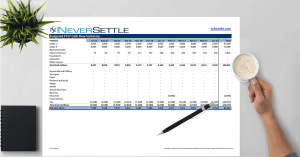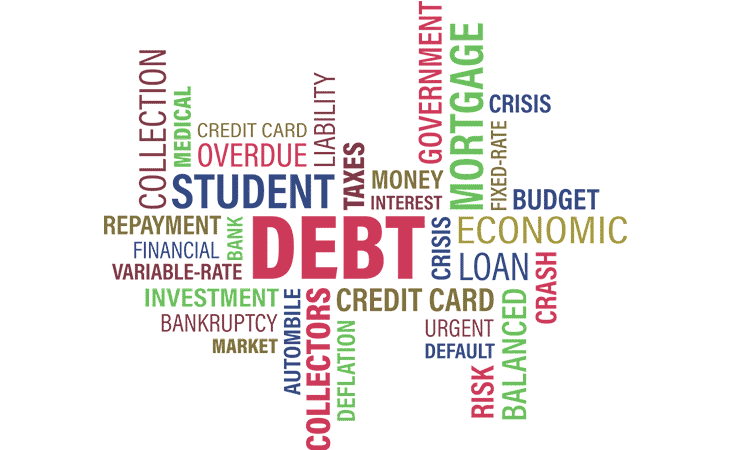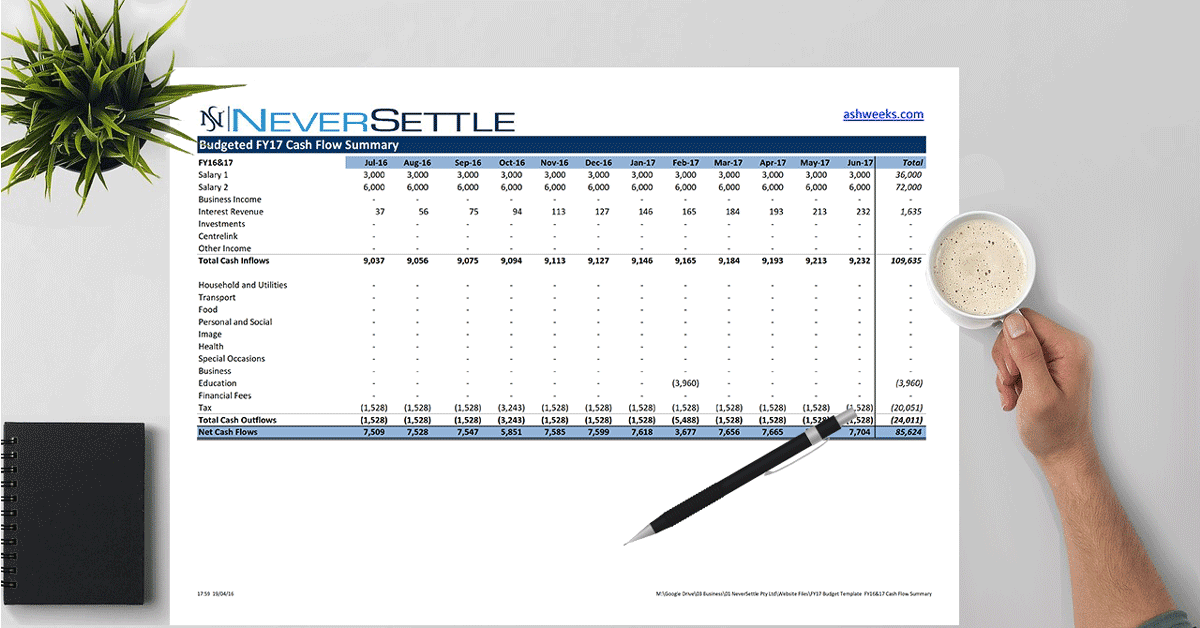If you’re currently studying or have recently graduated, you may not have had much of an opportunity to work. Even worse, you may have faced personal or family challenges that rendered you incapable of being as productive as others around you.
Alternatively, as explained in the post on how to avoid getting into debt, you may not have managed your money well or you let your ego do your financial decision-making.
Either way, you’re in debt and you want to get out.
What You Want
You don’t just want to get out of debt. I understand. If that was your only goal then I could point out your option of working as much as possible, spending as little as possible, and using the leftover money to pay down the debt.
The main desires I will focus on are:
- Reducing the stress and pressure from the debt
- Paying down the debt
- Maintaining your own savings
- Living a decent lifestyle
- Not ending back in debt
How to Get It
1. Understanding
First of all, take stock of your situation. Be honest with yourself — denying certain realities will only make them come crashing down on you later on.
For example, don’t overestimate your abilities. If you only have time or energy for school or university and 20 hours of work a week, then that’s all you can do. Telling yourself you can do more than your (sustainable) limit is going to lead to two things:
(1) you burning out in a few weeks when you collapse out of sleep deprivation or stress; and
(2) you feeling like you’ve failed, that everything is shit, and that you “can’t do it”.
There’s no use thinking about what could or should have been if circumstances had been different. Instead, acknowledge what has happened in the past and what your current situation is. How much debt do you have? How much work can you sustainably do? What are your minimum acceptable lifestyle expenses?
Based on the answers to these questions, you can work out the earliest achievable time for the debt to be paid down. Setting a debt-free date earlier than this demands that you either cut your lifestyle expenses down further (they’re currently at a minimum, though) or working more (and we’ve established that trying to do this will end up in you burning out).
Third Parties
If you are stressed out or struggling, talk to the person that lent you the money and work out a payment plan.
If you got a loan from the bank, understand that they want their money back and if you’re struggling to pay your current loan back then they’re generally willing to help you out. Perhaps they’ll extend the due dates or reduce the interest rate, on the condition that you don’t go any further into debt.
If you got a loan from family, they’re likely less worried about getting the money back than they are about your financial education and mental health. On one hand, they don’t want you to risk your health by stressing out all of the time, on the other they don’t want you to get into bad money habits — if you do, then you’re likely to get into financial distress in the future when the debt isn’t a $2k — $10k debt to family but a $200k — $400k mortgage with a family to look after.
Sit down with either party, explain your situation and come to a mutual understanding. Decide on a payment plan that works for everyone.
2. Financial Planning
To work out the actual numbers and dates related to earnings, loan repayments, due dates, and a debt-free target date, we’ll need to do some number crunching.
It’s not necessary to do a full-on detailed budget, some basic numbers can work just fine. Either way, I recommend using a spreadsheet on Excel (or similar program) to forecast future movements of money. As the dates progress, you can see how much money you actually earned and paid, to see how well you’re doing and to figure out if you need to adjust your estimates at all.
In the last post, I mentioned that a young person normally has three areas to spend time and money on:
- School
- Work
- Lifestyle
Spending less time on one means you are able to spend more on another. Spending more time working and/or spending less money on your lifestyle lets you pay down your debts faster. Let’s look at an example.
Today (25-May-16), you owe $10,000 to family. Being family, there’s no interest to worry about and repayments are flexible. You are currently studying and have enough productive time available to work 20 hours a week, no more. At $20/hr, you can sustainably earn $400 per week. You won’t pay any tax on this amount of money.
You’re living at home, so your main expenses are:
- Phone bill: $40 p.m.
- Car expenses (registration, servicing, fuel): $275 p.m.1
- Holidays: $125 p.m.2
- Dinners, events, food, alcohol: $190 p.m.3
- Other: $70 p.m.4
- Total: $700 p.m. or about $160 p.w.
So, we have two of our three big numbers:
- Maximum sustainable earnings: $400 per week
- Minimum acceptable lifestyle expenses: $160 per week
Now we can work out the third big number: the earliest date you can expect to be debt free. Note that this assumes that your income stays at an average of $400 per week and that your lifestyle expenses don’t increase. If your income is not consistent, consider doing a second calculation that uses your expected weekly earnings (an average) instead of the maximum. This way, if you’re earning $400 one week then $250 the next, you won’t be debt free by the earliest possible date but you will have a better idea of when you will be debt free. Your average earnings might be ($400 + $250) ÷ 2 = $325.
$400 – $160 = a maximum of $240 that can be put towards paying down the debt each week. $10,000 ÷ $240 = 42 weeks. This is the shortest possible time you can have the debt paid down. From today’s date, that would mean having a debt-free target date of 15-Mar-17.
$325 – $160 = an expected $165 that can be put towards paying down the debt each week. $10,000 ÷ $165 = 61 weeks. This is the most realistic time you can have the debt paid down. From today’s date, that would mean having a debt-free target date of 26-Jul-17.
Use your own numbers and work out your own debt-free target dates.
Maintaining Your Own Savings
The above strategy enables you to save money for future purchases but it doesn’t allow you to save money for the sake of saving.
So if you want a small “rainy day” savings fund of a thousand dollars or something, add that in to your yearly target. But if you’re happy with just always having enough money to pay for everything you listed in your minimum lifestyle, then you’re fine.
What will happen is that you will earn $400, pay $240 to the lender of money, then put the $160 into your bank account. Your bank balance will grow every week until it gets hit by the bigger expenses you are expecting, such as car registration or a holiday. At those points, it will drop back down again.
Note: if you have car registration or a holiday, etc due in less than 12 months then your “weekly expenses” will have to be increased a little bit to compensate for the timing difference.
3. Prevention
You need to be aware of what caused the debt in the first place if you want any hope of getting out and staying out a debt.
Whatever caused the debt, stop it from happening again or getting worse. If you’re using credit cards for everything, cut them up. If you have an expensive habit (alcohol, smoking, clothes/shoes shopping), get help quitting.
Take a look at my thoughts on the main areas students could get into debt and see the solutions that I offered.
Perhaps the reason you’re in debt has stopped being a problem and you don’t need to take any actions to prevent future debt. This process of budgeting your money, allocating some to lifestyle and some to debt/savings, is going to be a fantastic lesson in personal finance. Once you’re out of debt, you’ll be very much in charge of your money.






